- News
LaterMost ReadDistinctiveRohingya News Agency: Myanmar: Tens of thousands of Rohingya people - who remain deprived of a nationality - displaced by “clearance operations” amid reports of unlawful killings, indiscriminate firing on civilians, ...
- Issues
Most ReadDistinctive
- Books
- Documents
LaterMost Read
- Figures
- Entries
Most ReadDistinctiveShwe Maung, Former Myanmar MP November 15, 2016 Myanmar Security Forces are enjoying to kill Rohingyas including children, rape women and torching and destruction Rohingya houses and villages after the " October ...
- Arakan
Despite previous tragedies, Rohingya refugees reach the coast of Indonesia again
Thursday | 16/11/2023 - 12:37 PM
Rohingya News Agency - Al Jazeera Net
A fishing boat with 198 Rohingya people on board, including 69 women and 59 children, arrived on the coast of Pidi Governorate, east of the Indonesian province of Aceh, on Tuesday, months after Rohingya refugee ships stopped coming to Indonesia.
According to the refugees’ testimonies, they left from the coast on the border between Bangladesh and Myanmar, close to their camps, weeks ago, and remained for the last week in the Strait of Malacca, where they were at risk of drowning amid the crashing waves between Malaysia and Indonesia. When they arrived, the boat was in a very bad condition, and it was over. Increase them.
Recent experiences
Indonesia witnessed the arrival of a few ships and wooden fishing boats late last year, and hundreds were at risk of death on their journeys, whether from the coast of Myanmar or the coast of southeastern Bangladesh.
Among them is a ship that sank in mid-August, leading to the death of 23 Rohingya refugees, and the loss of 33 others who were also among those who drowned. They had left the coast of Rikaine State (Arakan) towards the coast of Malaysia, just like a few thousand people leaving for Malaysia and Indonesia. every year.
Before that, last June, activists circulated the news of the disappearance of another boat with 180 Rohingya refugees on board. One of the passengers had the last contact with his relatives, and then there was no trace of them again, and they have not reached any of the Asian coasts yet.
Last week, a boat carrying more than 150 Rohingya, most of them women and children, returned to the coast of Cox's Bazar in southeastern Bangladesh, after their boat had been reeling in the waters of the Bay of Bengal for 3 days, before local fishermen pulled it out to save their lives.
These migrants were stuck in the boat after the smugglers transported them from one of the coasts at night on small boats, to the larger wooden boat near the coast, but the smugglers left the refugees in the middle of the sea and returned on small boats, and there was no one among the refugees who was good at navigating towards the Malaysian coast or... Indonesian south, where the distance to one of them takes between two to four weeks.
UN reports indicated an increase in the phenomenon of Rohingya braving the sea waves by riding and risking their lives on board wooden boats, despite all the stories they hear of many drowning or dying along the way.
Last year, the migration of more than 3,500 refugees was recorded, an increase of 360% over the year 2021, and the percentage of women and children among them constituted 45%.
The danger of smugglers
Human traffickers and smugglers tempt Rohingya refugees to travel by sea, to escape the hardship of living and the severe siege imposed on their villages, or on their camps, whether in Myanmar, as is the case in Arakan State, specifically in the city of Sittwe or Akyab, or in Bangladesh, where the largest refugee camp in the world is.
The smugglers target those who have relatives living in Arab, Asian, or Western countries, where they can be blackmailed during the trip, and their families are threatened by exposing those on the boat to danger by torture, drowning, or assaulting them, including girls, children, and women. Then, as survivors spoke, pressure is put on their relatives. To pay money via certain transfers, or leave the refugee alone on the boat.
Sometimes the smugglers leave the boat or ship, leaving the refugees in the middle of the sea, while they are in the Andaman Bay, or before or after it, whether the boat coming from the Bay of Bengal is heading south towards the coast of Malaysia, or towards the Malacca Strait towards the coast of the Indonesian province of Aceh, north of the island of Sumatra.
Refugees usually board an old, dilapidated wooden fishing boat, while another smugglers' boat is waiting for them. They return to the coast of Myanmar or Bangladesh again, and continue luring another group of refugees with amounts that vary from a few hundred dollars to 4,000 sometimes.
Repellent conditions
It is noteworthy that the general conditions in the displacement camps in Myanmar or the refugee camps in Bangladesh have witnessed dangerous security conditions since late last year, as acts of crime, violence, and kidnapping for financial purposes are increasing.
It is also witnessing assassinations targeting specific figures and activists, coinciding with a decline in the food ration distributed by the World Food Programme, which is causing a food crisis with serious health impacts on refugees, especially children and women.
This has been announced repeatedly in international statements and distress calls, and the United Nations and the Food Program have asked the international community to donate enough to meet the need of about one million refugees. Specifically, there are 201,000 Rohingya families - according to United Nations figures - who are prohibited from moving and working in camps in Bangladesh, and hundreds Thousands more inside Myanmar.
What makes the situation worse for Rohingya refugees in displacement camps in Bangladesh is that 52% of them are children, and many of them were born in displacement camps, or were displaced there with their families in their early years, including 52% of women, in light of the near lack of formal education for these children.
This reality pushes many parents to immigrate to other countries, hoping for their children to have a better future than living in camps all their lives. This is the case of those who immigrated to Bangladesh following waves of violence and confrontations that occurred in the 1970s or 1990s, and they still live in those camps. The camps did not change their lives for the better.
Living in camps also makes refugees more vulnerable to the risks of natural disasters, such as floods and rain, or hurricanes and fires that have occurred repeatedly over the past years, such as Cyclone Mocha, which struck the western coast of Myanmar and the southeastern coast of Bangladesh, and struck displacement camps for the Rohingya and others.
In addition to the refugee scene in Myanmar, there is another military and security dimension that increases the complexity of the scene, which is the ongoing conflict between what is known as the “Arakan Army”, which represents the Rakhine Buddhist nationality, which shares the life of the Rohingya in Arakan State, and the Myanmar army affiliated with the military government ruling in the capital. Naypyidaw.
The Arakan Army, like other armed groups linked to nationalities and minorities in Myanmar, is fighting in pursuit of self-rule
التعليـــقات
Comments published does not reflect the opinion of the agency, but reflect the opinion of their owners

New Agency
Articles
Books
Mailing List
Search
































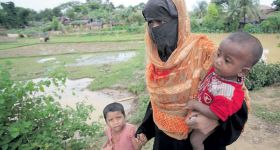












 The continued forced displacement of the Rohingya through torture, killing, and use of hard labour
The continued forced displacement of the Rohingya through torture, killing, and use of hard labour








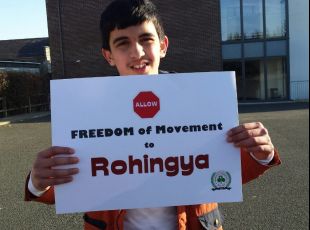

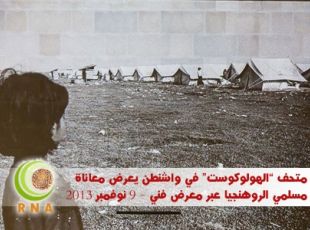





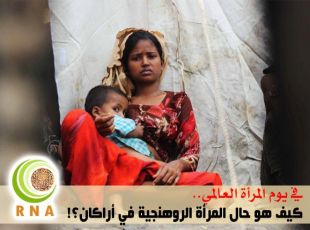


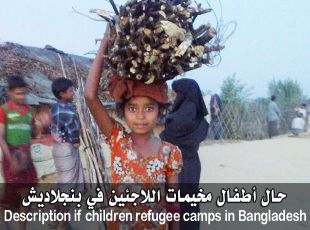














 Report: The Human Rights of Stateless Rohingya in Thailand
Report: The Human Rights of Stateless Rohingya in Thailand

